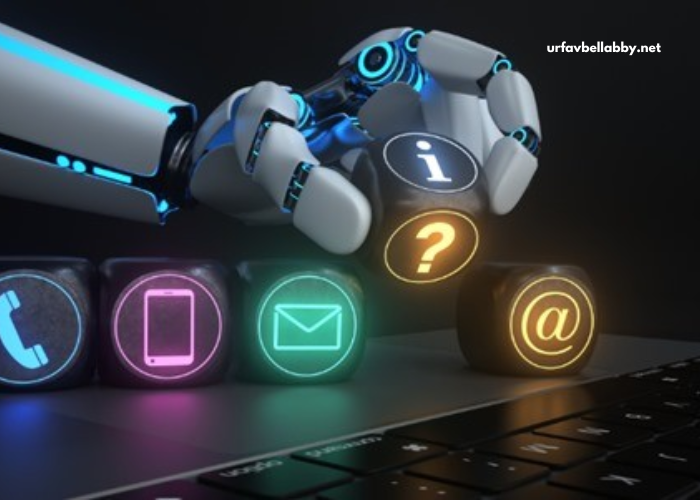In recent years, Artificial Intelligence (AI) and Automation have emerged as transformative forces, reshaping industries, economies, and everyday life. These technologies are no longer just buzzwords but are now deeply integrated into the fabric of modern society, influencing everything from business operations to personal convenience. With AI and Automation continually evolving, businesses, governments, and individuals must embrace these innovations to remain competitive and relevant in today’s fast-paced, tech-driven world.
This article explores how AI and Automation are revolutionizing various sectors, the benefits of integrating these technologies, the challenges they pose, and the future they hold. By understanding and adopting AI and Automation, businesses can streamline their operations, enhance efficiency, and foster innovation in ways that were once unimaginable.
Understanding AI and Automation
What is Artificial Intelligence?
At its core, Artificial Intelligence refers to the simulation of human intelligence processes by machines, particularly computer systems. These processes include learning, reasoning, problem-solving, perception, and language understanding. AI encompasses a wide range of technologies such as machine learning (ML), natural language processing (NLP), and computer vision, all of which allow systems to perform tasks that would traditionally require human intelligence.
In recent years, advancements in AI have led to its widespread adoption in various sectors, including healthcare, finance, retail, and transportation. The ability of AI to analyze vast amounts of data, recognize patterns, and make decisions based on these insights is a driving force behind its growing influence.
The Role of Automation
Automation refers to the use of technology to perform tasks without human intervention. It can be as simple as setting up an automated email marketing campaign or as complex as deploying robots to assemble products in a manufacturing plant. The main goal of automation is to increase efficiency, reduce human error, and free up time for employees to focus on more strategic tasks.
While automation has been around for decades, recent advancements in AI have made automation more intelligent and adaptable. Today’s automation systems are not only capable of executing repetitive tasks but can also learn and adapt to new tasks over time, making them more versatile and effective.
AI and Automation in Different Sectors
Revolutionizing Business Operations
AI and Automation are significantly transforming business operations across various industries. In the realm of customer service, AI-powered chatbots and virtual assistants are enhancing customer interactions by providing instant, personalized responses. These systems can handle basic queries, troubleshoot issues, and even recommend products or services, all without human intervention.
For businesses, automation tools are streamlining workflows, reducing administrative burdens, and improving efficiency. Tasks like data entry, invoice processing, and inventory management can now be automated, allowing employees to focus on higher-value activities such as strategy and innovation.
Healthcare: AI and Automation Saving Lives
The healthcare industry has seen significant benefits from the integration of AI and Automation. From improving diagnostic accuracy to optimizing treatment plans, AI is playing a crucial role in enhancing patient care. AI algorithms can analyze medical images, identify patterns, and assist doctors in diagnosing conditions such as cancer or neurological disorders at earlier stages.
In addition to diagnostics, automation in healthcare is improving efficiency in administrative tasks. AI-powered systems are being used to schedule appointments, manage patient records, and streamline billing processes, reducing human errors and improving overall efficiency.
Manufacturing and Supply Chain: The Rise of Smart Factories
AI and Automation are revolutionizing manufacturing and supply chain operations, giving rise to “smart factories.” These advanced manufacturing environments leverage AI-driven robots, IoT (Internet of Things) devices, and data analytics to optimize production processes, reduce downtime, and improve product quality.
Automation has also led to the creation of self-optimizing supply chains. With the help of AI, companies can predict demand fluctuations, optimize inventory levels, and adjust production schedules in real-time. This results in cost savings, faster delivery times, and a more resilient supply chain.
Transportation: Self-Driving Cars and Autonomous Vehicles
In the transportation sector, AI and Automation are driving the development of autonomous vehicles. Self-driving cars, trucks, and drones are no longer just concepts; they are becoming a reality. With the help of AI, these vehicles can navigate complex environments, make decisions in real-time, and learn from their surroundings to improve safety and efficiency.
Automation in transportation is also improving logistics. AI-powered systems are used to optimize routes for delivery trucks, predict maintenance needs, and manage fleets more effectively, reducing costs and increasing operational efficiency.
Benefits of Embracing AI and Automation
Increased Efficiency and Productivity
One of the most significant advantages of AI and Automation is the ability to increase efficiency and productivity. By automating repetitive and mundane tasks, businesses can free up their human workforce to focus on higher-value work, such as problem-solving, innovation, and strategic planning. This leads to faster decision-making, enhanced creativity, and a more productive workforce.
AI-powered tools can also optimize workflows, ensuring that tasks are completed in the most efficient manner possible. For example, AI can analyze large datasets to identify inefficiencies in supply chains or customer service processes, helping businesses make data-driven decisions that lead to improved outcomes.
Cost Savings
Automation helps businesses reduce labor costs by performing tasks that would traditionally require human workers. In sectors such as manufacturing, robots can take over dangerous or repetitive jobs, leading to significant cost savings while also reducing workplace injuries. Similarly, AI-driven systems can handle tasks like data analysis and customer support, reducing the need for large customer service teams.
In addition to labor cost savings, AI and automation can help businesses cut costs by minimizing errors, improving operational efficiency, and optimizing resource allocation.
Enhanced Customer Experience
AI-driven technologies are transforming the way businesses interact with customers. AI chatbots, recommendation engines, and personalized marketing strategies are all designed to improve the customer experience by delivering more relevant, timely, and personalized services. This can lead to higher customer satisfaction, increased loyalty, and greater revenue opportunities.
For example, AI-powered recommendation systems used by e-commerce platforms like Amazon analyze past purchase behavior to suggest products that are likely to interest customers. This personalized approach enhances the shopping experience and can lead to higher conversion rates.
Innovation and Competitive Advantage
By embracing AI and Automation, businesses can stay ahead of the competition and drive innovation. These technologies enable companies to create new products, services, and business models that were previously unthinkable. AI-driven insights can also help businesses identify emerging trends, customer preferences, and market gaps, giving them a competitive edge.
For example, AI is being used in the financial services industry to develop new investment strategies, detect fraudulent activities, and improve risk management. By leveraging these tools, companies can make smarter, data-driven decisions that lead to greater success in the market.
Challenges of AI and Automation
Job Displacement Concerns
While AI and Automation offer numerous benefits, they also pose significant challenges, particularly in terms of job displacement. As automation takes over routine tasks, many workers fear losing their jobs. Industries such as manufacturing, retail, and transportation are particularly vulnerable to this shift, as many jobs can be automated through AI-powered systems and robotics.
However, while some jobs may be displaced, new opportunities are also being created. AI and automation are driving the demand for skilled workers in fields such as data analysis, machine learning, and robotics. The key to addressing job displacement is reskilling and upskilling the workforce to adapt to the changing job landscape.
Data Privacy and Security Concerns
The widespread adoption of AI and Automation raises important questions about data privacy and security. AI systems often require access to vast amounts of personal and sensitive data to function effectively. This has created concerns about how this data is collected, stored, and used by businesses.
To mitigate these risks, companies must ensure that they have robust data protection measures in place. This includes adhering to privacy laws and regulations, implementing strong encryption protocols, and ensuring transparency in data usage.
Ethical Considerations
As AI becomes more integrated into decision-making processes, ethical considerations become increasingly important. For example, AI algorithms used in hiring or lending decisions may inadvertently perpetuate biases if they are trained on biased data. This raises questions about the fairness, transparency, and accountability of AI systems.
To address these issues, businesses and policymakers must work together to establish ethical guidelines and frameworks that ensure AI is developed and used responsibly.
The Future of AI and Automation
The Rise of Autonomous Systems
In the coming years, we can expect to see an increase in the development of autonomous systems. From self-driving cars to autonomous drones and robots, these technologies will revolutionize industries such as transportation, logistics, and manufacturing. As AI becomes more sophisticated, these systems will become more capable of operating independently, making decisions in real-time, and learning from their environment.
Human-AI Collaboration
The future of work will likely see a greater emphasis on human-AI collaboration. Rather than replacing humans, AI and Automation will augment human capabilities, enabling workers to focus on higher-level tasks while relying on AI for repetitive and time-consuming activities. This will create a more dynamic and productive workforce that combines the strengths of both humans and machines.
Continued Growth and Innovation
The potential for AI and Automation is virtually limitless. As these technologies continue to evolve, we can expect new applications and breakthroughs that will further transform industries and society. Businesses that embrace these innovations early on will be well-positioned to capitalize on new opportunities and stay ahead of the competition.
Conclusion
AI and Automation are no longer the technologies of the future; they are shaping the present and paving the way for an even more innovative, efficient, and interconnected world. While there are challenges to address, including job displacement, data privacy, and ethical concerns, the benefits of these technologies far outweigh the risks. By embracing AI and Automation, businesses can enhance their productivity, reduce costs, improve customer experiences, and drive innovation. The key to success will be in how organizations and individuals adapt to and leverage these technologies for a better, more sustainable futur.





